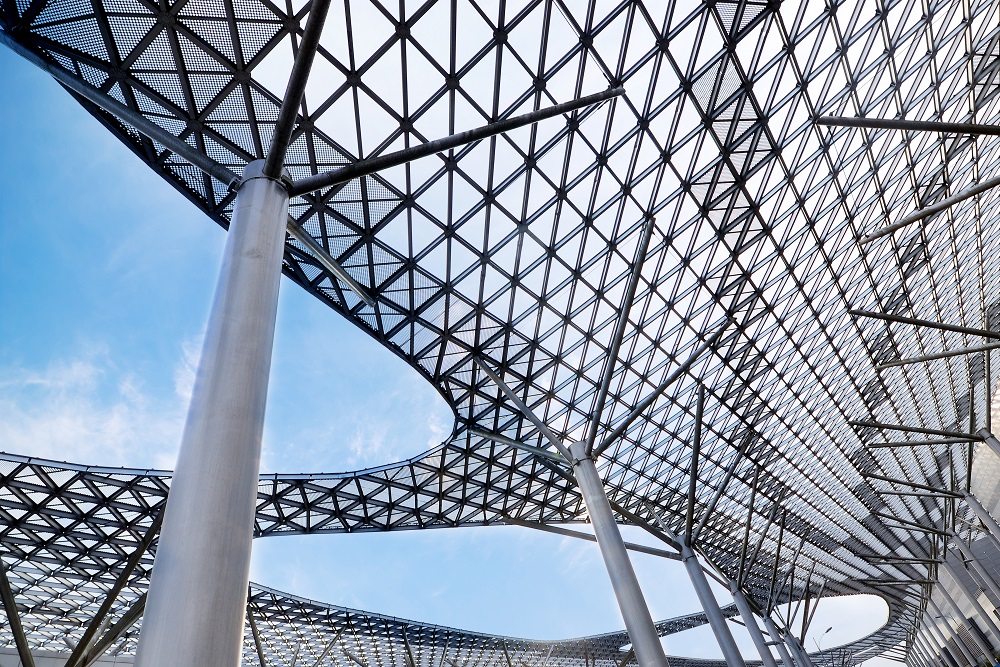Steel is the material of choice for contemporary architecture. Steel is liked by architects, builders, and construction specialists alike due to its unrivalled strength, versatility, and durability. Architectural steel, often referred to as structural steel, can be broken down into numerous forms, each of which possesses a unique compositional characteristic governed by different standards in various countries. Steel is the material of choice among construction and architectural field in the modern era.
Let's Look At Some Of The Benefits That Architectural Steel Offers
1. Strength
Because of its superior strength-to-weight ratio, it is the most widely used structural material in contemporary buildings. It is the material of choice for architects due to its exceptional load-bearing capacities and its capacity to produce stunning and inventive designs while preserving the building's structural integrity.
2. Aesthetics
Over the last fifty years, building and architectural projects have increasingly used steel. Because architectural steel is easy to work with and complements many materials, including glass, concrete, brick, and wood, you can do more with it than you might think. Steel can be used in virtually any setting.
3. Sustainability
A growing number of architects are opting to build with environmentally friendly materials to mitigate the impact of deforestation caused by the construction industry. In contrast to structures made of wood, which may require the equivalent of up to 50 trees' worth of lumber, the production of steel requires no wood, which allows our delicate ecosystems to continue functioning normally.
4. Easy To Manipulate And Use
Steel is helpful to workers. It is not cumbersome and can be carried easily. It's not required to use any hazardous insecticides, preservatives, or preservatives. Off-site, all of the cutting and preparation is completed so that it is ready to be installed.
5. Corrosion Resistance
It is common knowledge that stainless steel has excellent corrosion resistance. Steel is not affected by the elements, which makes it an excellent material for building because of its durability and corrosion-free appearance over time.
Design for Buildings Made of Steel
Modern steel production uses high-tech computer software such as Computer Numerical Control (CNC) systems, which monitor and control the movement of tools such as routers, welders, and laser cutters.
What Are the Various Forms That Architectural Steel Sections Can Take?
These channeled beams are U-shaped and have right-angled corners at either end. They are called parallel flange channels. They come in a wide range of sizes, but each side is uniformly the same length and runs parallel to the other regardless of the dimensions. They are useful in applications analogous to angled sections and have an advantageous ratio of strength to weight.
Beams with Tapered Flanges — These I-shaped sections are known as tapered flange beams, laid as per the requirement of structural designs. In the construction industry, these are frequently used for girder cross-sections. Despite having high resistance ratios, it is best to avoid using them in situations where there will be pressure applied over their whole length because they are not resistant to torsion (twisting).
The beams can be differentiated into I, H, Angle and columns and hollow sections used as per the calculation and structural design.
Conclusion
Equal and unequal angled architectural steel sections are the two varieties that fall within the category of angled sections. Both have right angles, but uneven portions have axes of varying sizes, giving them a L shape instead of a straight line. This segment is significantly more potent (up to 20%) and has larger strength-to-weight ratios than other segments. Angled sections are required in all aspects of construction, including residential development, infrastructure, mining, and transportation. They are available in a wide range of lengths as well as sizes.






















